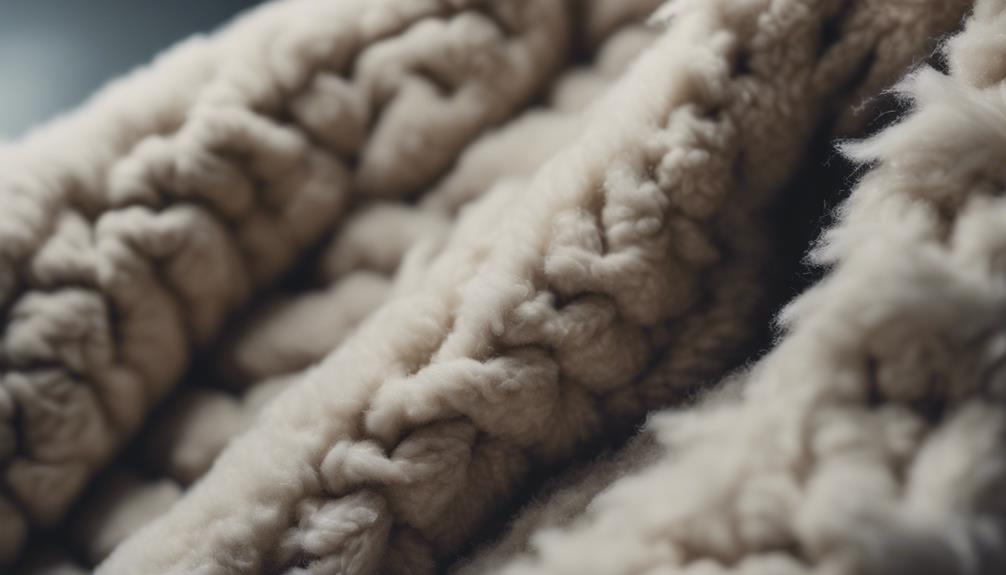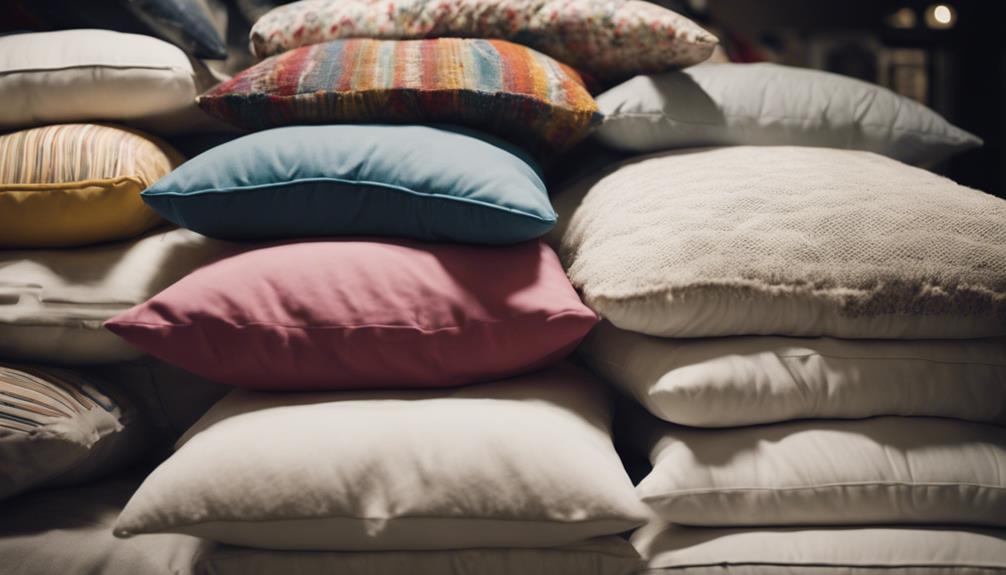When it comes to warmth, Sherpa fabric is typically superior to fleece thanks to its thicker texture and better insulation. Sherpa efficiently traps heat, providing exceptional warmth in cold conditions. Its densely packed fibers help retain body heat, making it perfect for extremely low temperatures. On the other hand, fleece is lighter and dries faster, more suitable for mild winters or layering. Sherpa’s insulating properties truly shine in consistently cold environments, creating a cozy shield against the chill. To learn more about why Sherpa is the top choice for warmth, delve deeper into its insulation prowess and heat retention abilities.
Key Takeaways
- Sherpa offers superior warmth in cold conditions.
- Dense fibers trap heat efficiently.
- Provides better insulation than fleece.
- Ideal for extremely cold environments.
- Known for exceptional heat retention.
Sherpa's Insulating Properties
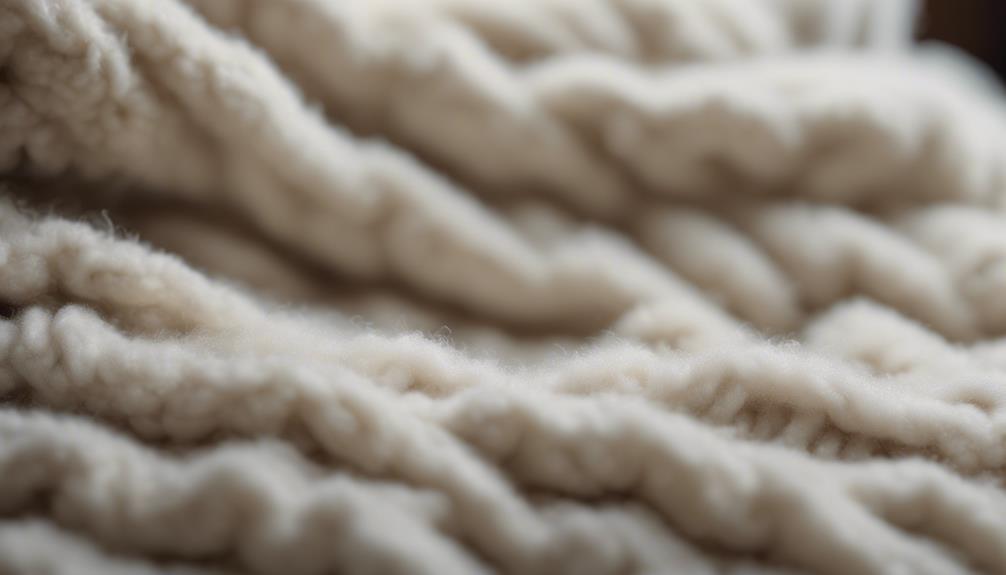
Sherpa fabric boasts exceptional insulation properties, efficiently trapping heat to provide superior warmth.
The dense and plush nature of Sherpa sets it apart from other fabrics like fleece, making it a top choice for staying cozy in cold weather.
Due to its thick and fluffy texture, Sherpa offers better insulation compared to many materials, including fleece.
In chilly conditions or colder climates, Sherpa blankets or clothing items excel at providing exceptional warmth.
This fabric's insulating properties are highly regarded, making it a popular option for those seeking to stay comfortable when the temperatures drop.
With its ability to effectively trap heat, Sherpa is often considered warmer than fleece, ensuring that individuals can stay snug and toasty even in the coldest of environments.
When it comes to insulation, Sherpa truly shines, offering reliable warmth and comfort for all who embrace its cozy embrace.
Fleece Vs Sherpa: Warmth Comparison
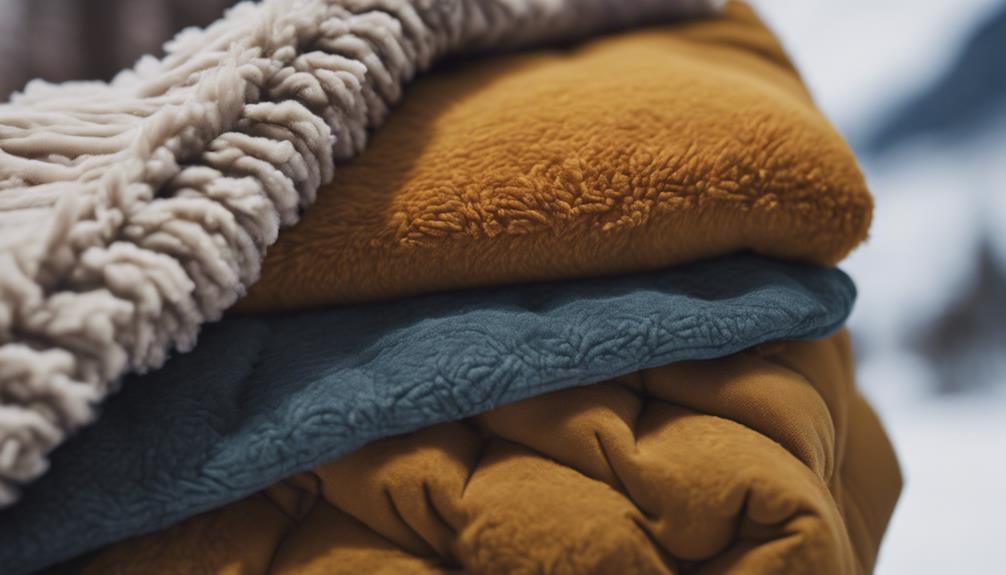
Sherpa and fleece linings differ in their warmth levels.
Sherpa, with its thicker texture, offers superior insulation compared to fleece.
For colder climates, Sherpa linings are generally preferred due to their enhanced thermal properties.
Material Differences
Comparing the warmth of fleece and Sherpa linings reveals distinct differences in insulation properties. Sherpa lining, with its thicker and fluffier texture, provides better insulation compared to fleece lining. In extremely cold conditions, Sherpa is generally considered warmer, making it the preferred choice for areas with consistently chilly temperatures. On the other hand, fleece lining, although lighter, may not offer as much warmth as Sherpa. It is more suitable for milder winter weather or for layering under a heavier coat. Here is a comparison table highlighting the material differences between Sherpa and fleece linings:
| Property | Sherpa | Fleece |
|---|---|---|
| Thickness | Thicker and fluffier | Lighter |
| Warmth | Warmer in cold conditions | Less warm than Sherpa |
| Suitability | Best for chilly temperatures | Suitable for milder weather or layering |
Insulation Comparison
In cold climates, the insulation provided by Sherpa lining outperforms fleece due to its thicker and fluffier texture. When comparing Sherpa vs fleece, one finds that Sherpa fleece is generally considered warmer, making it a preferred choice for extremely cold conditions.
Sherpa lining's ability to trap heat efficiently is a result of its lofty composition, which creates pockets of air that retain warmth close to the body. On the other hand, while fleece lining is lighter and suitable for milder winter weather or layering under heavier outerwear, it may not offer the same level of insulation as Sherpa in the face of harsher temperatures.
For areas with consistently chilly climates, Sherpa lining proves to be the superior option for staying warm and cozy.
Thermal Properties Contrast
With its thicker and fluffier texture, Sherpa lining provides superior insulation compared to fleece, especially in extremely cold conditions. The synthetic nature of Sherpa allows it to trap warmth without adding bulk, making it ideal for harsh winter climates.
In contrast, fleece, while lightweight and versatile, may not offer the same level of warmth as Sherpa in severe cold. Sherpa lining excels in providing a cozy barrier against chilly winds and frigid temperatures, making it a preferred choice for individuals living in regions with consistently low mercury levels.
When seeking a garment that offers exceptional warmth without compromising comfort, Sherpa lining stands out for its insulating properties that go beyond what fleece can typically provide.
Understanding Sherpa's Thermal Efficiency
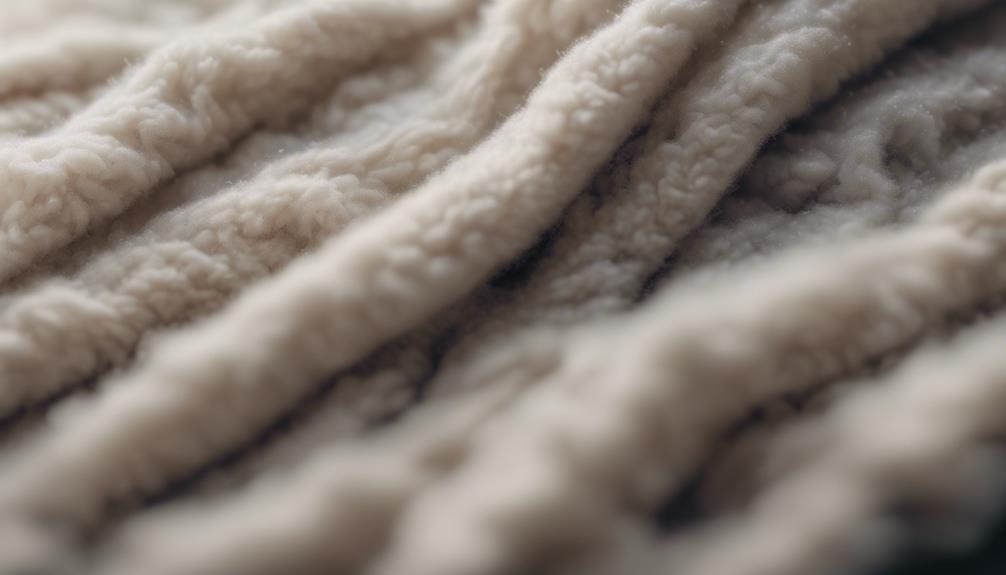
Sherpa's exceptional thermal efficiency stems from its dense and fluffy texture, which effectively traps heat close to the body. The plush nature of Sherpa fleece creates air pockets that help insulate and keep warmth near, making it a popular choice for cold weather. Compared to regular fleece, Sherpa is often considered warmer and cozier due to its ability to retain heat efficiently. This makes it an excellent option for outdoor activities or chilly environments where staying warm is essential. The thermal properties of Sherpa fabric have made it a preferred choice for blankets, jackets, and other cold-weather gear.
| Sherpa vs Fleece | Thermal Efficiency | Plush Texture |
|---|---|---|
| Sherpa | High | Dense and fluffy |
| Fleece | Moderate | Soft and smooth |
The Warmth Factor: Sherpa Vs Fleece
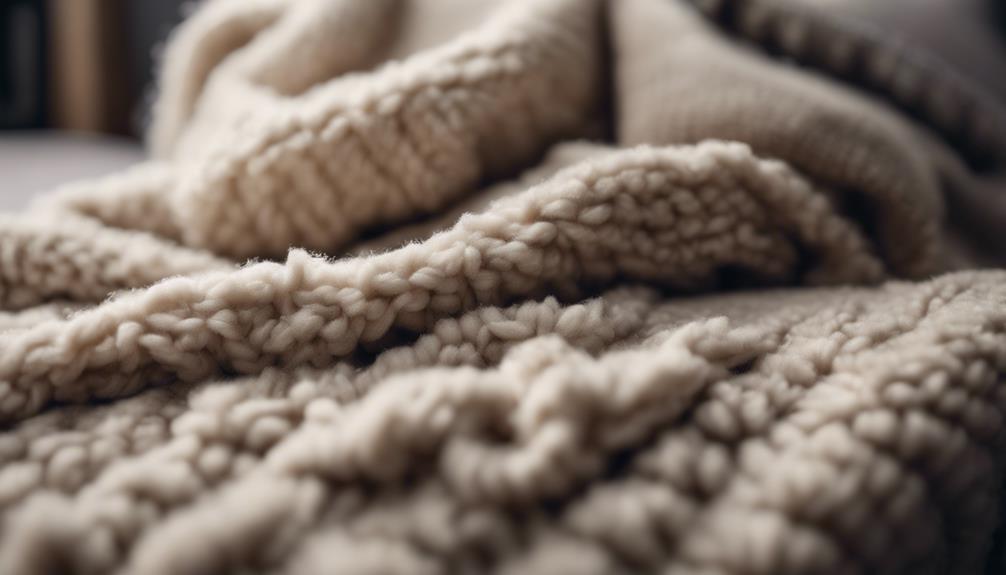
Sherpa and fleece linings differ in their insulating properties. Sherpa is thicker and fluffier, providing better warmth in cold conditions. Fleece, on the other hand, is lighter and more suitable for milder winters or layering. Sherpa excels in consistently chilly temperatures due to its superior insulation.
When comparing the two for warmth, factors like breathability, moisture-wicking capabilities, durability, and longevity also come into play.
Insulating Properties Compared
Comparing the insulating properties of Sherpa and fleece linings reveals significant differences in warmth retention. Sherpa, with its thicker and fluffier texture, provides better insulation compared to fleece. This makes Sherpa lining a preferred choice for staying warm in consistently chilly temperatures. In extremely cold conditions, Sherpa outperforms fleece in keeping you cozy.
On the other hand, fleece linings, although lighter, may not offer the same level of warmth as Sherpa. They're more suitable for milder weather or as a layering option. Additionally, fleece linings dry faster than Sherpa, making them practical for wet conditions. In snowy or rainy weather, the quick-drying properties of fleece-lined jackets can be more convenient.
Breathability and Moisture-Wicking
Breathability and moisture-wicking play essential roles in determining the warmth factor between Sherpa and fleece linings. When it comes to keeping warm, breathable fabrics are vital to prevent overheating and discomfort. Sherpa excels in this area, offering both warmth and breathability due to its unique texture and construction. Let's compare the moisture-wicking properties of Sherpa and fleece in the table below:
| Aspect | Sherpa |
|---|---|
| Warmth | Excellent warmth retention |
| Breathability | Highly breathable, prevents overheating |
| Moisture-Wicking | Superior moisture-wicking properties |
| Comfort | Soft and cozy, ideal for cold weather |
Sherpa's superior warmth, breathability, and moisture-wicking capabilities make it a top choice for staying warm and comfortable in various conditions.
Durability and Long-Lasting
In exploring the durability and longevity aspect between Sherpa and fleece blankets, it becomes evident that the dense fibers and thick texture of Sherpa contribute considerably to its reputation for lasting warmth. Sherpa blankets are made to be durable and long-lasting, showcasing their ability to retain heat effectively.
While fleece blankets are also durable, they may not offer the same level of enduring warmth as Sherpa blankets, especially in colder climates. The dense construction of Sherpa fabric plays a significant role in maintaining warmth over time, making it a preferred choice for those seeking lasting comfort.
When prioritizing durability and long-lasting warmth, Sherpa blankets stand out for their construction and insulating properties.
Sherpa's Heat Retention Abilities
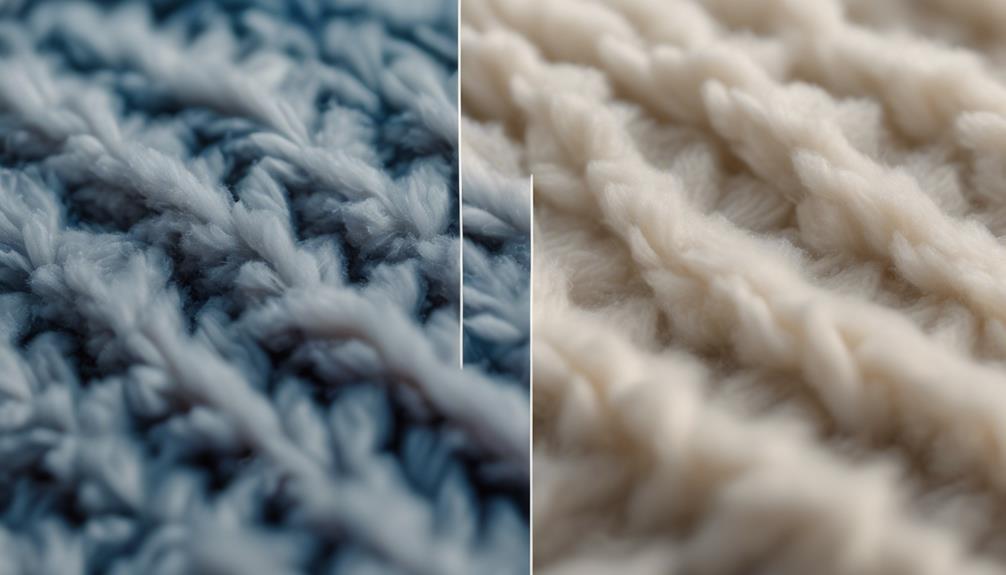
Sherpa's exceptional heat retention abilities stem from its thick and fluffy texture, which effectively traps warmth to keep individuals cozy in colder temperatures. The dense fibers of Sherpa fabric work diligently to retain body heat, making it a superior choice for insulation compared to fleece.
Sherpa is renowned for its ability to provide exceptional warmth, especially in chilly climates or during the winter season. Its plush and insulating nature sets it apart from fleece when it comes to heat retention properties.
In direct comparison, Sherpa outperforms fleece in maintaining warmth due to its unique texture and structure. The thick and fluffy composition of Sherpa fabric creates air pockets that lock in heat, ensuring that individuals stay comfortably warm.
Whether for outdoor adventures or indoor relaxation, Sherpa's heat retention capabilities make it a preferred option for those seeking cozy comfort in cooler environments.
Thermal Performance: Sherpa and Fleece
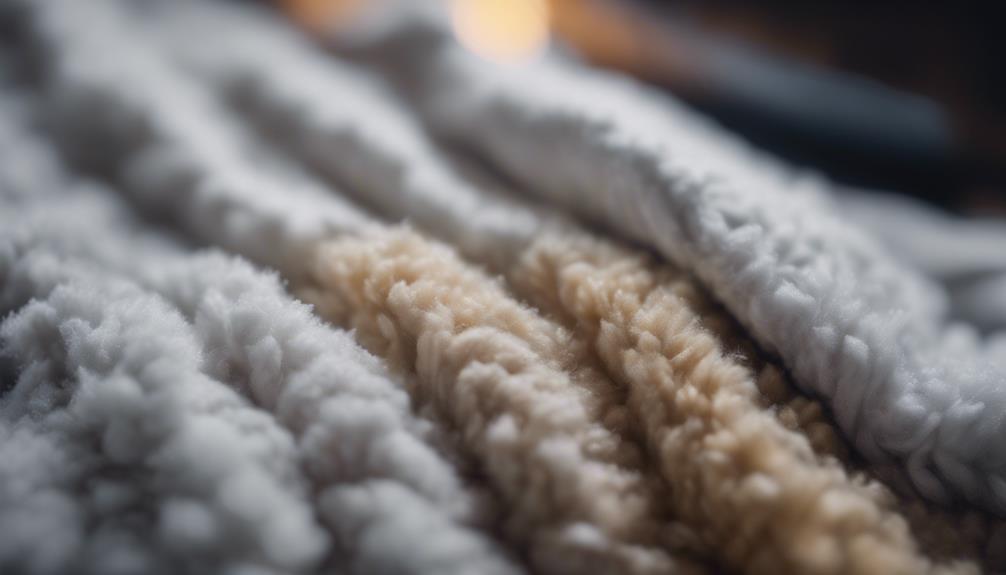
Comparing the thermal performance of Sherpa and fleece linings reveals distinct differences in insulation capabilities. Sherpa lining, with its thicker and fluffier texture, provides better insulation compared to fleece. In extremely cold conditions, Sherpa is generally considered warmer due to its ability to trap more heat.
On the other hand, fleece lining, while lighter, may not offer as much warmth as Sherpa. Fleece is more suitable for milder winter weather or for layering under a heavier coat when extra warmth is needed. However, in areas with consistently chilly temperatures, Sherpa lining is the preferred choice for its superior thermal performance.
When it comes to staying warm, the choice between Sherpa and fleece ultimately depends on the level of insulation required and the specific weather conditions one is facing.
Analyzing Sherpa's Heat Retention
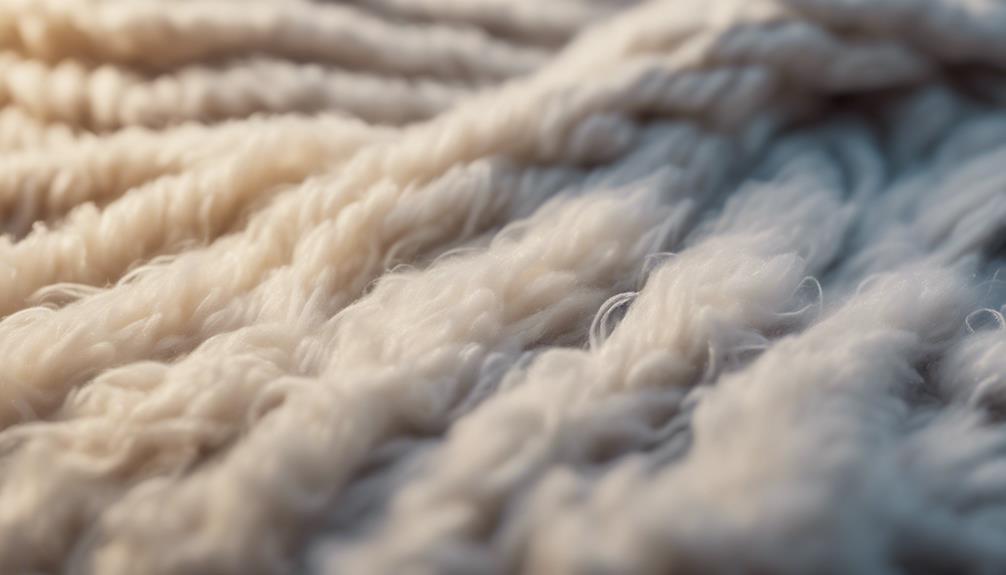
Analyzing the heat retention of Sherpa fabric reveals its superior insulation capabilities compared to fleece in colder climates. Sherpa, with its thicker and fluffier texture, outperforms traditional fleece by trapping more heat within its dense fibers. This quality makes Sherpa blankets or clothing items the preferred choice for staying warm in chilly weather.
While fleece provides insulation, it may not offer the same level of warmth as Sherpa fabric in extremely cold conditions. When it comes to keeping you warm, Sherpa is generally considered the better option between the two fabrics. Its ability to maintain heat effectively ensures that you stay cozy and comfortable even when the temperatures drop.
Does Sherpa Provide More Warmth?
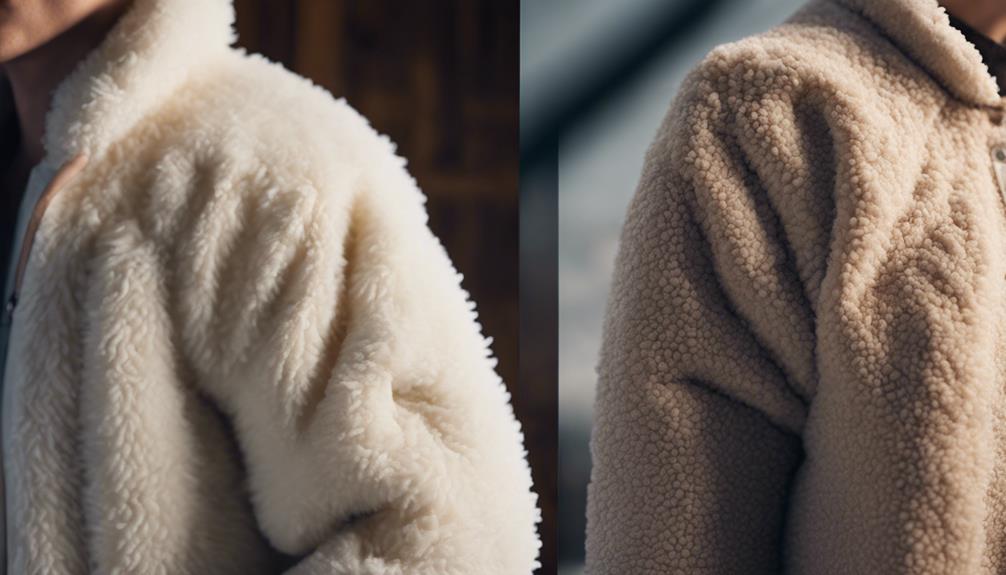
Sherpa blankets are known for their exceptional warmth due to their thick and fluffy texture, which traps heat effectively.
In contrast, fleece may not offer the same level of insulation as Sherpa in extremely cold conditions.
For those seeking maximum warmth in consistently chilly climates, Sherpa lining is often the preferred choice.
Sherpa Vs Fleece
When it comes to warmth, Sherpa fabric typically outperforms fleece due to its thick and fluffy texture, providing superior insulation in cold conditions.
- Sherpa vs FLEECE:
- Sherpa is thicker and fluffier than fleece, creating a dense barrier against the cold.
- The wool-like texture of Sherpa traps heat effectively, offering excellent warmth retention.
- In extremely cold climates, Sherpa is often preferred over fleece for its enhanced insulating properties.
Insulation Comparison
Comparing insulation levels, Sherpa fabric typically provides superior warmth compared to fleece due to its thicker and fluffier texture. Sherpa, made from synthetic materials, is designed to keep you warm in colder conditions. To illustrate the difference in insulation between Sherpa and fleece, consider the following comparison:
| Insulation Level | Sherpa | Fleece |
|---|---|---|
| Thickness | Thick and fluffy | Lighter weight |
| Warmth | Excellent for extreme cold | Suitable for milder weather |
| Use Case | Ideal for consistently chilly temperatures | Good for layering or mild winters |
The Coziness of Sherpa Fabric
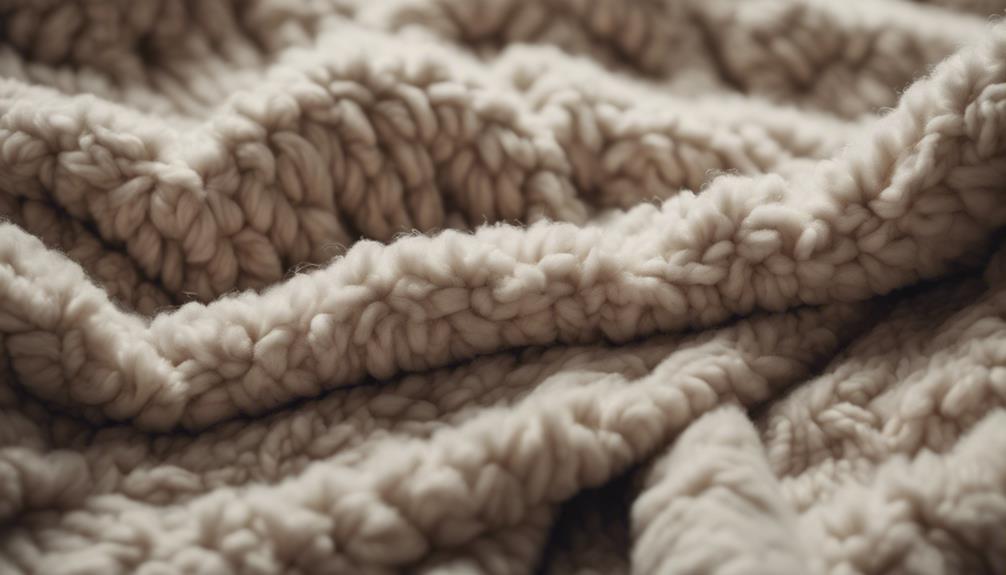
We can't help but sink into the cozy embrace of Sherpa fabric, enveloped in its luxurious warmth and softness. Sherpa fabric, inspired by the plush and soft texture of sheep's wool, offers a delightful tactile experience unmatched by many other materials.
Here are three reasons why Sherpa fabric is the epitome of coziness:
- Luxurious Feel: The design of Sherpa fabric aims to replicate the comforting warmth of sheepskin, providing a cozy sensation that's perfect for snuggling up on a cold day.
- Exceptional Warmth: Known for its fluffy texture and excellent insulating properties, Sherpa fabric excels at trapping heat effectively, making it an ideal choice for those seeking warmth in chilly climates.
- Versatile Use: Whether in blankets or outerwear, Sherpa fabric's thick and plush construction ensures that individuals are kept warm and comfortable, making it a popular choice for various cold-weather items.
Fleece or Sherpa: Which Is Warmer?

Snuggling up in a cozy blanket, one may wonder: Is Sherpa warmer than fleece? When comparing Sherpa and fleece for warmth, Sherpa usually comes out on top. The reason behind this lies in the texture of the materials. Sherpa lining, with its thicker and fluffier composition, provides better insulation compared to fleece. This makes Sherpa a preferred choice in very cold conditions where staying warm is important. On the other hand, fleece lining, although lighter, may not offer the same level of warmth as Sherpa. Fleece is more suitable for milder winter weather or for layering under a heavier coat when extra warmth is needed.
In the context of blankets, fleece blankets are made from synthetic materials, while Sherpa blankets often incorporate the use of animal-derived fibers, adding to their insulating properties. Therefore, when it comes to choosing between fleece and Sherpa for warmth, Sherpa is generally considered the cozier and warmer option, especially in consistently chilly temperatures.
Frequently Asked Questions
Is Sherpa or Fleece Better?
Sherpa and fleece each have unique strengths, but when comparing the two, Sherpa often shines due to its superior insulation properties.
Sherpa's thick and fluffy texture provides excellent warmth, making it a top choice for chilly weather. While fleece is lightweight and offers good breathability, it may not match Sherpa in cold conditions.
As a result, for ultimate coziness and warmth, many opt for Sherpa over fleece.
Does a Sherpa Keep You Warm?
Sherpa fabric indeed keeps us warm, thanks to its excellent insulation properties and dense texture that traps body heat effectively.
This plush material is a top choice for chilly weather, providing cozy warmth in winter clothing and blankets.
Its ability to retain heat makes it a preferred option over standard fleece.
For ultimate warmth and comfort, Sherpa is a reliable go-to, ensuring we stay snug and cozy when temperatures drop.
Does a Sherpa Stay Warm When Wet?
When wet, Sherpa fabric retains warmth due to its dense fibers and insulating properties. The thick texture traps heat close to the body, ensuring continued warmth even in damp conditions.
Unlike some materials, Sherpa doesn't lose its ability to keep you warm when wet, making it a reliable choice for various weather conditions.
Whether in rain or snow, a Sherpa garment provides insulation and keeps us warm, offering comfort and coziness.
Is Sherpa or Flannel Warmer?
Sherpa is generally warmer than flannel due to its thicker and fluffier texture, providing superior insulation properties. It's favored for trapping heat and offering extra coziness, making it ideal for colder weather.
On the other hand, flannel is lightweight and breathable, suitable for moderate temperatures.
When comparing warmth, Sherpa outshines flannel with respect to heat retention and overall comfort.
Which Blanket Material, Sherpa or Fleece, Offers Better Warmth?
When it comes to the difference between sherpa fleece blankets, warmth is a key factor. Sherpa blankets are made from a thick, plush material that provides excellent insulation, making them ideal for colder climates. Fleece blankets, on the other hand, are softer and lighter, making them a great choice for mild temperatures.
Conclusion
To sum up, when it comes to warmth, sherpa fabric outperforms fleece due to its excellent insulating properties and heat retention abilities. Sherpa's thick, fluffy texture traps heat close to the body, making it a cozy and efficient choice for cold weather.
So, if you're looking to stay warm and snug during chilly days, opting for sherpa over fleece is like wrapping yourself in a comforting hug from Mother Nature herself.
